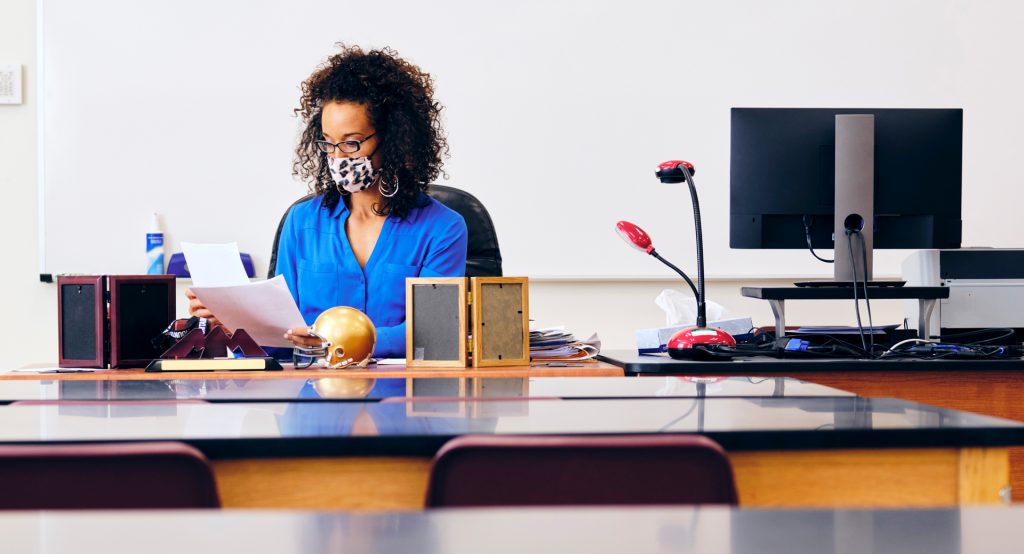
Across all socioeconomic and political lines, there is little dispute that teachers are, in fact, essential. They are pillars of our society and, through human expertise, create the foundation upon which all professions and trades may exist.
But until August, teachers in the United States were not considered essential workers. Now that they are, many educators find themseleves on the front line in the fight against COVID-19, asked to transition to in-person instruction without federally provided tools or resources to keep them safe. While our society needs teachers, our teachers need protection from the dangerous, real and imminent threat of COVID-19. It is incumbent upon school administrators to apply rigorous mitigation and prevention efforts to keep their teachers safe and healthy.
In its Strategies for Protecting K-12 School Staff from COVID-19, the Centers for Disease Control and Prevention emphasizes that “K-12 school administration … should develop and implement a comprehensive strategy aimed at preventing the introduction of COVID-19 into school facilities.” Likewise, in its Considerations for Institutions of Higher Education, the CDC recommends asking “students to conduct self-checks (e.g., temperature screening and/or symptom checking).” Key to these tactics for both K-12 and higher education institutions is that any effective prevention strategy must be implemented not only on the school’s premises but also before students, teachers and staff step foot onto campus to block the introduction of the virus into the school environment.
Key COVID-19 Prevention Strategies for School Administrators to Implement When Reopening for In-person Instruction
While administrators must launch several strategies to thwart the spread of COVID-19 in a school environment — including mask wearing, hand washing and social distancing — the use of technological solutions to protect individuals and prevent spread is key. This technological solution must be made available to parents and guardians, in the case of minors, or students, in the case of college and universities, before students enter the school, where they will come into contact with teachers and peers. This means an essential component of protecting teachers is implementing an electronic reporting system that allows parents, guardians and students to screen for COVID-19 symptoms and risk factors, including fever, respiratory symptoms and exposure threats, before the school day commences. Schools must employ a reliable, safe and private means of collecting documentation to ensure students are free of symptoms and risk factors before entering the school, and ensure teachers are notified – via application alerts, nudges and/or reminders – before they enter the classroom. With parents, guardians and students held as the responsible party to screen for COVID-19 symptoms and exposure risks, teachers are permitted to focus on their first priority of classroom instruction while receiving the assurance that they are stepping into a safe environment.
Technological solutions are essential in the battle to keep educators safe as they step back into the classroom in the midst of a global pandemic. In-person solutions that rely on teacher-student contact put both parties at risk, and real-time visibility and advanced warning will be crucial to protecting both individuals and ecosystems.